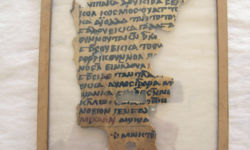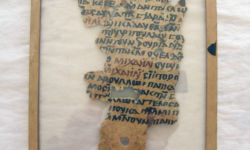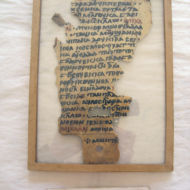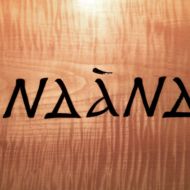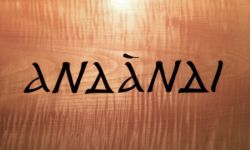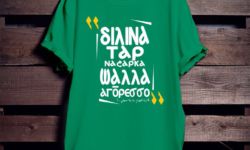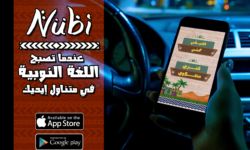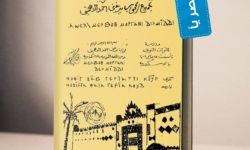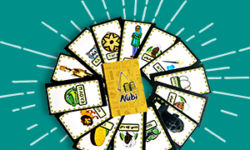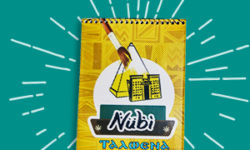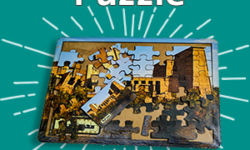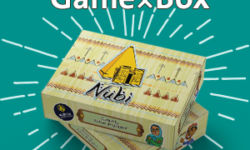Profile
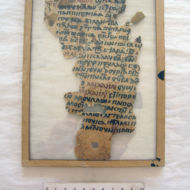
The Nubian script is the product of not one but two great thousand-year-long kingdoms in the great cradle of the upper Nile valley. It developed almost at the dawn of writing itself, in a region that was inhabited from at least 5000 BCE, home to megalithic astronomical devices that predate Stonehenge by almost 2,000 years.Nubia was first mentioned in 2300 BCE in Old Kingdom Egyptian accounts of trade missions, as the Egyptians imported gold, incense, ebony, copper, ivory, and exotic animals from tropical Africa through Nubia. Egyptians referred to Nubia as “Ta-Seti,” or “The Land of the Bow,” since the Nubians were known to be expert archers.
Yet Nubia is now almost forgotten, its land area divided between Egypt and Sudan, its language and cultural traditions marginalized. Its script, however, gives clear hints of a Nubian past and perhaps a Nubia to come.
By 800 BCE the first major Nubian kingdom — the Kingdom of Kush — was established, with its capital at Meroë. The Kushites preserved many ancient Egyptian customs, but were unique in many respects, not least for their place in the history of writing. They developed their own writing system, known as Meroitic — one of the first true alphabets, a script with 23 signs.
For reasons that are complex and unclear, the Kingdom of Kush disintegrated in the fourth century AD after more than a thousand years of existence, and in its place three smaller Nubian kingdoms arose: Nobadia in the north, Makuria in the center, and Alwa in the south. We don’t know much about their early days, including how they converted to Christianity, which according to one account was the result of bizarre contest, between the orthodox Byzantine Emperor Justinian and his miaphysite wife Theodora, that sent priests and bishops racing across the desert, helped or hindered by the local authorities.
Whatever the case, the bottom line is that the three kingdoms were Christianized, and the result can be seen in their writing. Nobadia and Makuria adopted the Coptic alphabet being used by Egyptian Christians, but incorporated three Meroitic letters that expressed sounds not represented in Coptic. The Alwan kingdom seems to have developed its own alphabet that combined Greek and Meroitic letters with glyphs of local invention. Over the next 200 years, especially when Makuria conquered Nobadia, the Old Nubian alphabet and language were gradually adopted throughout the unified kingdom. Again, it’s important to stress how deep these roots go: Old Nubian writing is perhaps as old as the earliest written English, and arguably older than written French and written German.
Unlike Egypt, Nubia was strong enough to resist the rise of Islam in the 640s and 650s, though the price for peace was a treaty known as the baqt by which the Nubians would supply 360 slaves a year in exchange for a shipment of Egyptian grain.
Nubia survived and even flourished, but the Nubian language was increasingly challenged by Arabic, which was more regional and more widely used in commerce. Eventually in the 16th century the northern part of Nubia was conquered by the Ottomans, while the southern section was swallowed by the Sennar sultanate of Sudan/Eritrea/Ethiopia. Nubia would never be whole again, and like other subjugated cultures, it lost management of its language, its religion, its land, and its destiny.
The conversion of Nubia to Islam accelerated the process of Arabization, and as Arabic was a language of high importance in both Sudan and Egypt, Nubian continued to be eroded, its use largely confined to Nubian homes.
To add to the culture’s instability, about 60% of the territory of Nubia was destroyed or rendered unfit for habitation as a result of the construction of the Aswan Dam and the creation of Lake Nasser in 1963-1964. At least half of the Nubian population was forcibly resettled—a common fate for marginalized minorities.
Of the roughly 600,000 Nubians in Egypt and Sudan who speak a cluster of related Nubian languages, the vast majority do not read or write the Nubian script and may not even know of its existence. One Old Nubian scholar reports that the Egyptian/Sudanese governments actively suppress the knowledge of the medieval Nubian kingdoms and the use of mother-tongue language among the Nubian community.
The past few years, though, have seen a fascinating reaching out by the past toward the present, and vice versa. Scholarship in Old Nubian is seeing a revival, which in turn bestows dignity and respect on Nubian cultural heritage. Meanwhile Momen Talosh, a Nubian activist, has created a Nubian teaching app and an organization (NUBI) to promote the learning, usage, and safekeeping of the Nubian language(s), and by extension, the Nubian culture. NUBI is developing networks within Egypt to create a first-of-its-type Nubian language teaching curriculum, including a set of children’s games specifically used for teaching the Nubian alphabet and language through play.
A group of Nubian activists has revived the Nubian script, with Mukhtar Khalil Kabbara making a number of modifications to streamline Nubian writing.
In other news, as this page is being written, one petition is circulating for presentation to UNESCO “to save the Nubian Language from Arabization and cultural cleansing,” and another “to the Governments of Egypt and Sudan to Recognize the Nubian Language.”
One other odd, ancestral quality makes the Nubian script unique. When the Coptic alphabet was adopted, and adapted, for writing old Nubian, for some long-lost reason the invariably upright Coptic letters were written, by Nubian scribes, on a slant. This means that in a sense Old Nubian is the only alphabet in the world to be written entirely in italics.
You can help support our research, education and advocacy work. Please consider making a donation today.
Links
General script, language, and culture resources
- Wikipedia
- Omniglot
- ScriptSource
- Ancient languages of Nubia
- Language background
- Download the Nubi App and learn Nubian
- Purchase Nubian language learning package and other items
- Nubi team interview with the BBC
- Nubi team talking about the project
- Nubian Language and Grammar
- Nubian Language Society
- International Society for Nubian Studies
- Shakespeare’s Sonnet 18 in English and Nubian
- The Union for Nubian Studies
Community support
Gallery
